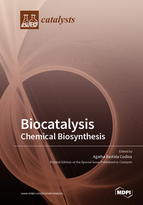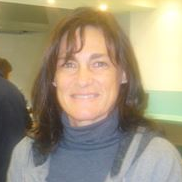Biocatalysis: Chemical Biosynthesis
A special issue of Catalysts (ISSN 2073-4344). This special issue belongs to the section "Biocatalysis".
Deadline for manuscript submissions: closed (31 July 2019) | Viewed by 42945
Special Issue Editor
Interests: small biomolecules; molecular modeling; enzyme as a catalyst; combination therapy; inhibitors or decoy acceptors as drugs; carbohydrates
Special Issues, Collections and Topics in MDPI journals
Special Issue Information
Dear Colleagues,
Biocatalysis is a topic based on the edge of biology and chemistry, which enroll together scientists from life sciences, engineers and computer field. Biocatalysis, cell free and whole cell systems, play an increasingly role in a broad range of applications, including food processing, materials, fine chemicals, and medicine. Applied biocatalysis is driven by advances in novel protein engineering tools, economic and environmental pollution. Compare to free biocatalyst, the immobilization techniques improve the stability/activity ration, purification, and the ability to recycle the catalyst consequently more efficient process in the industry. Compared to traditional organic synthesis the use of enzymes provide a way of producing enantiomerical pure compounds mainly through high chemoselectivity and streoselective properties and very mild reaction conditions which offers advantages such as minimizing side reactions or not requiring multiple protection/deprotection steps. The advances in directed evolution, molecular cloning, DNA synthesis, bioinformatic tools, high-throughput screening, and process scale-up have opened up a door to a great variety of enzymes as tools in the industry. By other hand, the use of biosynthetic enzymes can introduce structural diversities that are otherwise inaccessible by organic synthesis. Although biocatalysis have expanded in the industry, a lack of structural and mechanistic knowledge about enzymes has limited widespread use of enzymes. Then combination of the in silico methods for engineering physical properties into proteins and structural biology techniques can guide the understanding of biocatalytic mechanisms and the development of new ones in biology and biotechnology.
Dr. Agatha Bastida Codina
Guest Editor
Manuscript Submission Information
Manuscripts should be submitted online at www.mdpi.com by registering and logging in to this website. Once you are registered, click here to go to the submission form. Manuscripts can be submitted until the deadline. All submissions that pass pre-check are peer-reviewed. Accepted papers will be published continuously in the journal (as soon as accepted) and will be listed together on the special issue website. Research articles, review articles as well as short communications are invited. For planned papers, a title and short abstract (about 100 words) can be sent to the Editorial Office for announcement on this website.
Submitted manuscripts should not have been published previously, nor be under consideration for publication elsewhere (except conference proceedings papers). All manuscripts are thoroughly refereed through a single-blind peer-review process. A guide for authors and other relevant information for submission of manuscripts is available on the Instructions for Authors page. Catalysts is an international peer-reviewed open access monthly journal published by MDPI.
Please visit the Instructions for Authors page before submitting a manuscript. The Article Processing Charge (APC) for publication in this open access journal is 2700 CHF (Swiss Francs). Submitted papers should be well formatted and use good English. Authors may use MDPI's English editing service prior to publication or during author revisions.
Keywords
- Biosynthetic enzymes
- DNA synthesis
- Protein engineering
- Microbial enzymes
- Biocatalysis
- Organic synthesis
- Pharmaceutical
- Green chemistry
- Synthetic biology
- Biotransformation






